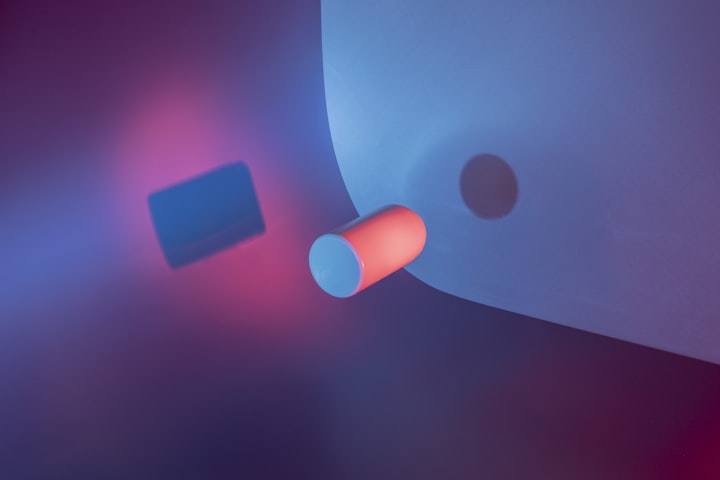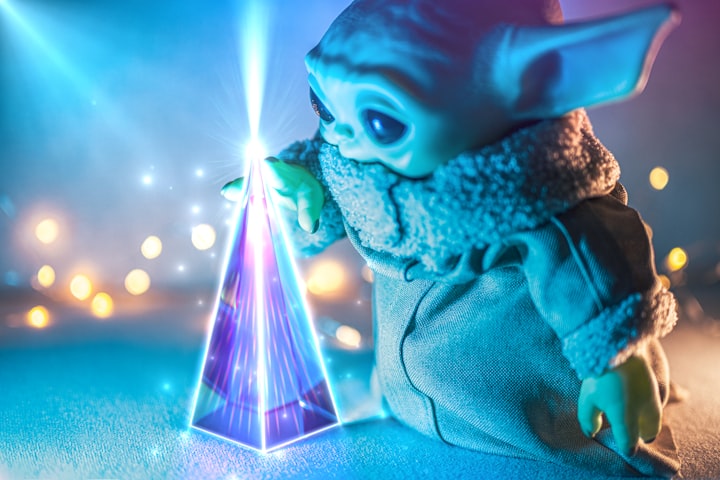One of the Hottest Quantum Startups in Europe
Rahko: Quantum Computing and AI Drug Discovery

Today I am going to talk about Rahko, a startup at the intersection of AI🤖, quantum computing and computational chemistry, trying to solve pharma's biggest problem during drug discovery, namely: "how to find new drugs 💊 without spending an average of $2.6bn and 10-15 years to bring a single drug to the market and with an overall success rate of doing this...5-12%"!
Rahko, founded in 2018 by Leonard Wossnig, Edward Grant, Miriam Cha and Ian Horobin, is a London-based quantum machine learning company building ‘quantum discovery’ 🌀capabilities for chemical simulations. And Leonard Wossnig the theoretical computer scientist and physicist, short Leo, is the boss of the company.

In his interview, just published (May 2021 Physics World), he explains why computational methods used in classical modelling so often fail to produce successful candidates for drug development. Modelling (molecular modelling) — is a valuable and essential tool to medicinal chemists in the drug design process — and describes the generation, manipulation or representation of 3D structures of molecules (drug candidates) and associated physico-chemical properties.
In particular, he explained that the success and failure of such modelling is based on two key criteria: 1) prediction accuracy (such as predicting the properties of each drug candidate with a certain degree of accuracy, to understand how each candidate will behave in the human body) and 2) screening speed.
But, and this is BIG but, today’s computational chemistry methods for modelling are done by calculating those (chemical) interactions between candidate drugs and targets in a "classical" way, instead he said these interactions are governed by the laws of quantum mechanics. What that means, is that the predictions of computational chemistry methods used in classical drug discovery are often highly inaccurate!!!
“The atoms or elementary particles themselves are not real; they form a world of potentialities or possibilities rather than one of things or facts.” ― Werner Heisenberg
So, Leo and his friends are welcoming you to this new magical 🔮 quantum world in Drug Discovery where it is not a coincidence — because God does not play dice — that on June 2020 their company was named the"Hottest Quantum Startup" at the Europas Tech Startup Awards. (Europas was launched by TechCrunch editor Mike Butcher, and is considered as “the only independent and editorially driven event to recognise the European tech startup scene”. Past winners include Spotify, TransferWise, SoundCloud and Babylon Health).
This new "quantum world" where quantum computers hold great promise, will allow scientists like Leo to model the interactions of the drug candidates with the different (millions even more, billions) targets in the human body using quantum mechanical calculations, which are extremely accurate, and will probably give physicists and drug discovery scientists a place in the Walk of Fame of Science.
In this quantum world — a place where the “mind” governs the “matter” and reality "might appear different than it really is" — Quantum mechanics (QM) — or also known as quantum physics, quantum theory, the wave mechanical model, or matrix mechanics — is the fundamental theory which describes nature at the smallest scales of energy levels of atoms and subatomic particles.

But, the problem with QM — even though is perfectly described mathematically — is that seems to defy the common-sense notions of causality, locality and realism.
For example, one of QM’s most mystifying phenomena is quantum entanglement (Qe). According to this phenomenon, when two particles — such as atoms, photons, or electrons — are entangled, they experience an inexplicable link that is maintained even if the particles are on the opposite sides of the universe, a million light-years away. If that reminds you the “The Red Thread of Fate” (the gods tie an invisible red cord around the little fingers of those that are destined to meet one another regardless of place, time, or circumstances”…), is because we actually live in a magical world...!
And it gets even more weird, because according to the theoretical physicist John Wheeler "Reality is made of information (a matrix of 3D tetrahedron) which is created by observation", and that means that everything exists only when it is observed (by consciousness).
Moreover, we know and take it for granted that life moves from the past to the future but in QM, the distinction between cause (past) and effect (future) is not made at the most fundamental level, so time symmetric systems can be viewed as causal or retro-causal. In particular, retrocausality is a concept where the effect precedes its cause in time. And that means that “A problem was solved in the future only because I want a bunch of nice guys inside a startup (in the past) to solve this problem,...when in actul fact is usually the opposite "A startup is created to solve a problem in the future”.
Moreover, thanks to quantum entanglement where the information transfer “breaks” the speed of light, if you create a startup now the related effect (resolve a problem as a startup) could occur instantly a million light-years in an entagled universe. So, that means that what Rahko is doing here (earth) is affecting instantanely an entagled Rahko, on the opposite side of the universe, a million light-years far away🔭!
“The more we delve into quantum mechanics the stranger the world becomes; appreciating this strangeness of the world, whilst still operating in that which you now consider reality, will be the foundation for shifting the current trajectory of your life from ordinary to extraordinary. It is the Tao of mixing this cosmic weirdness with the practical and physical, which will allow you to move, moment by moment, through parallel worlds to achieve your dreams.” ― Kevin Michel, Moving Through Parallel Worlds To Achieve Your Dreams
But even though, these 3 principles of causality, locality and realism break down in the quantum realm, QM's laws are also explaining developing technologies on earth righ now, such as quantum chemistry, quantum optics, quantum computing, superconducting magnets, light-emitting diodes, the optical amplifier and the laser, the transistor and semiconductors such as the microprocessor, medical and research imaging such as magnetic resonance imaging and electron microscopy.
So, let's go back to our ordinary world, Rahko and quantum chemistry the application of quantum mechanics to chemistry.
At Rahko (a product of University College London’s ‘Conception X’ accelerator programme), they develop quantum machine learning software for fast and accurate simulation of chemistry, considering the laws of quantum mechanics with application to drug discovery. Namely, at Rahko they factor in the magical quantum world and its law in the traditional AI Drug Discovery process. And quantum machine learning is for them the combination of machine learning, traditional quantum simulation software (computational chemistry), and in the long term also quantum computing.
The startup has now raised €1.5 million 💵 in a seed round led by Balderton Capital (one of the leading European VC firms). Also participating in the round were venture firm AI Seed and angel investors Charles Songhurst (former Microsoft Head of Corporate Strategy), Tom McInerney (Founder, TGM Ventures), John Spindler (CEO, Capital Enterprise) and James Field (CEO, LabGenius).
Moreover, among its advisors you can find Alexandre Tkatchenko, Gabor Csanyi, Mike Payne, George Booth, Jonathan Tennyson and Cedric Weber, that is some very intelligent physicists.
Finally, at Rahko — this startup full of "quantum PhDs" — they are working with partners such as the Merck Group to overcome any barriers and make better drugs, faster and cheaper.
“The quantum principle shows that there is a sense in which what the observer will do in the future defines what happens in the past — even in a past so remote that life did not then exist, and shows even more, that ‘observership’ is a prerequisite for any useful version of ‘reality”. — John Wheeler
Thank you for reading 👓💙
And if you liked this post why not share it?
#science #health #pharma #drugdiscovery #drugdevelopment #AI #biotechAI #quantum
💻💊🔬💉📊🤖
👉🏻References
Drug Design: AI tools and startups
Planning and execution of chemical synthesis: tools and startups






Comments
There are no comments for this story
Be the first to respond and start the conversation.